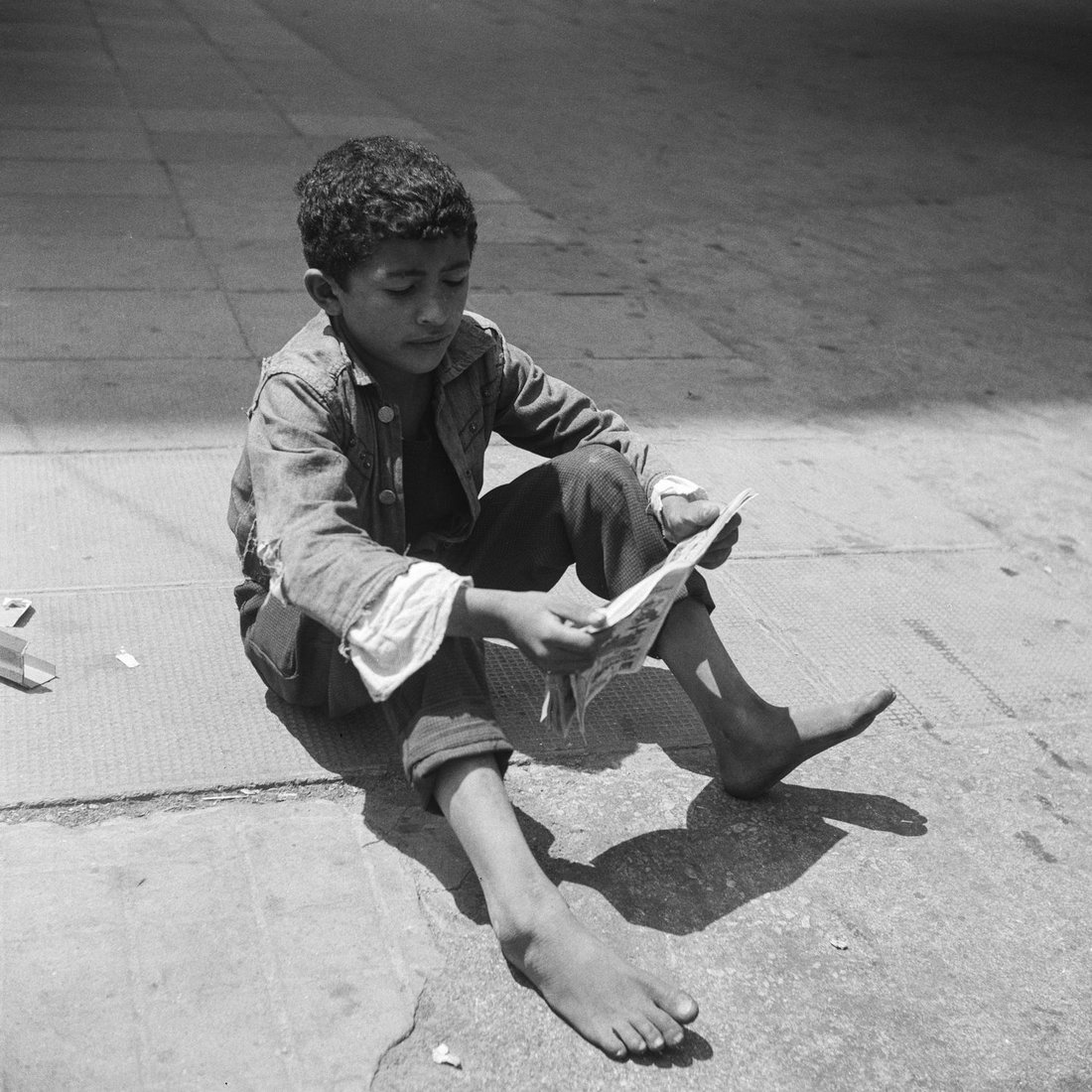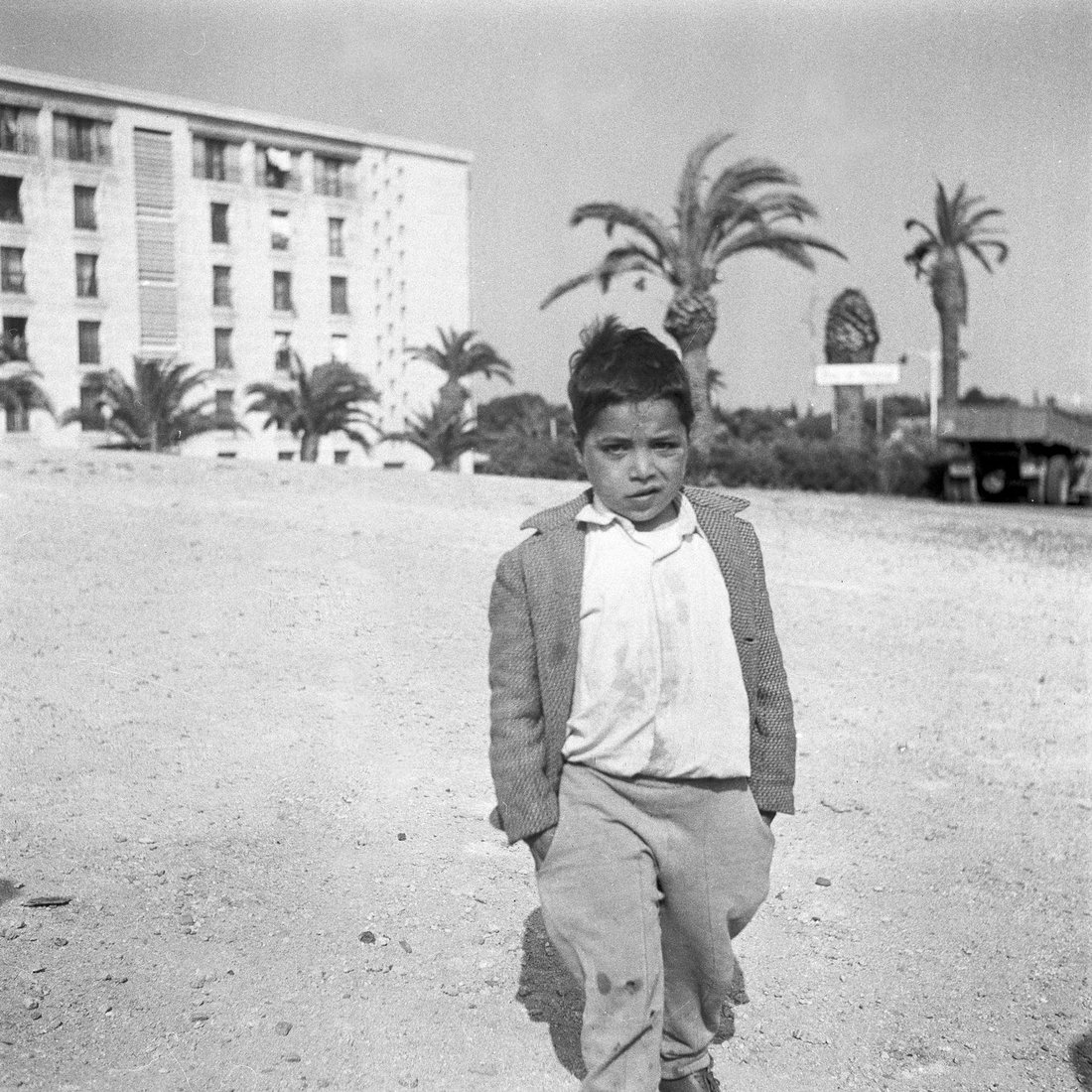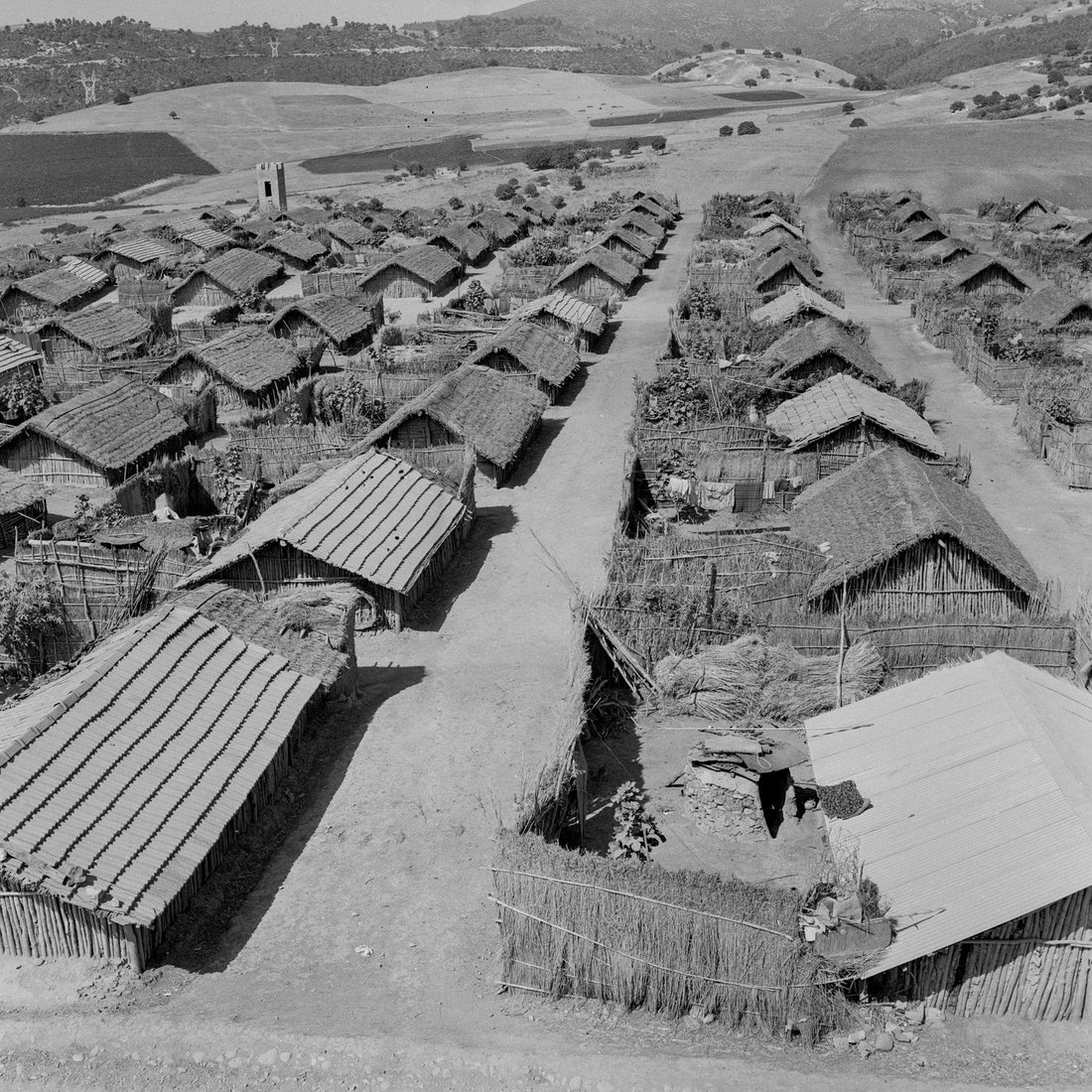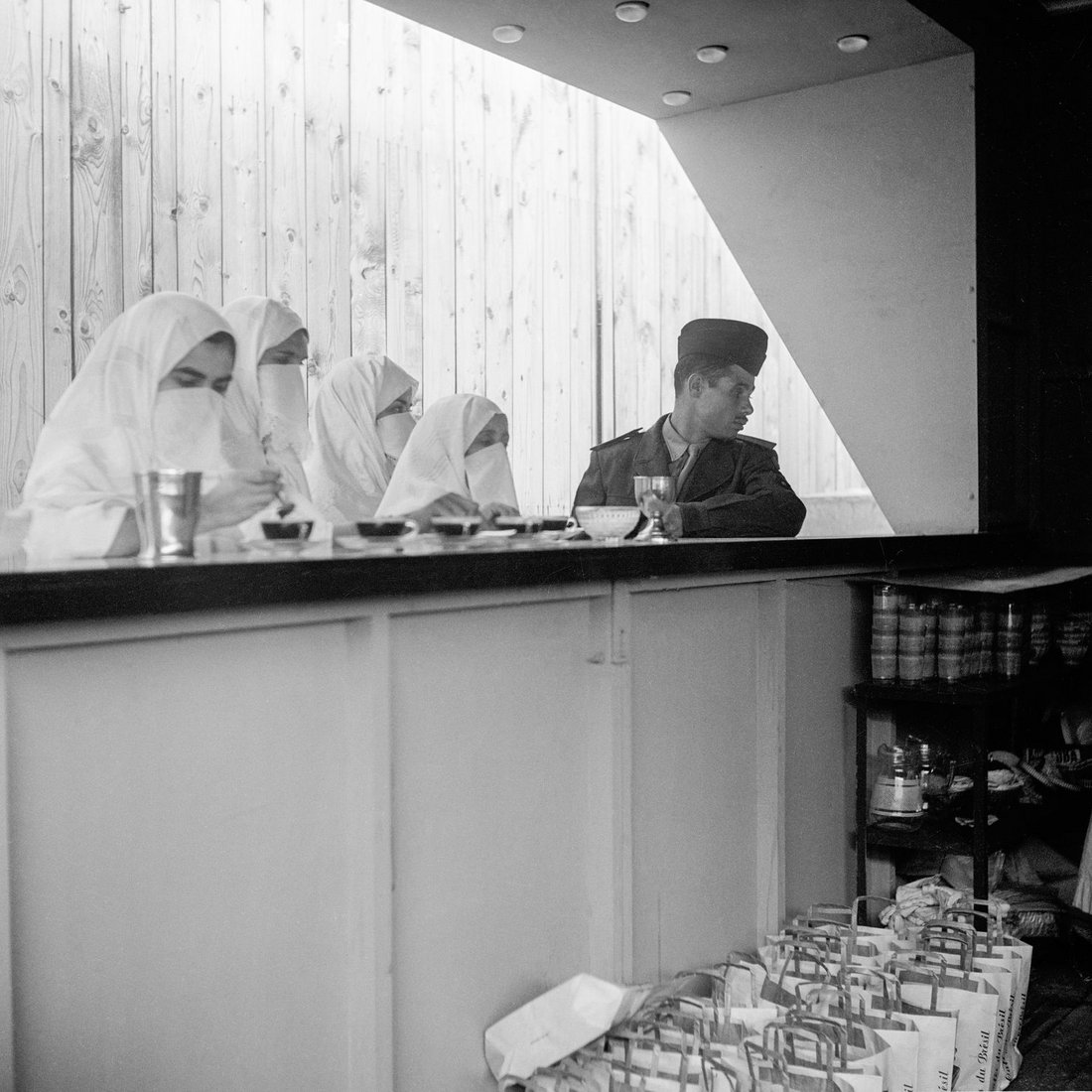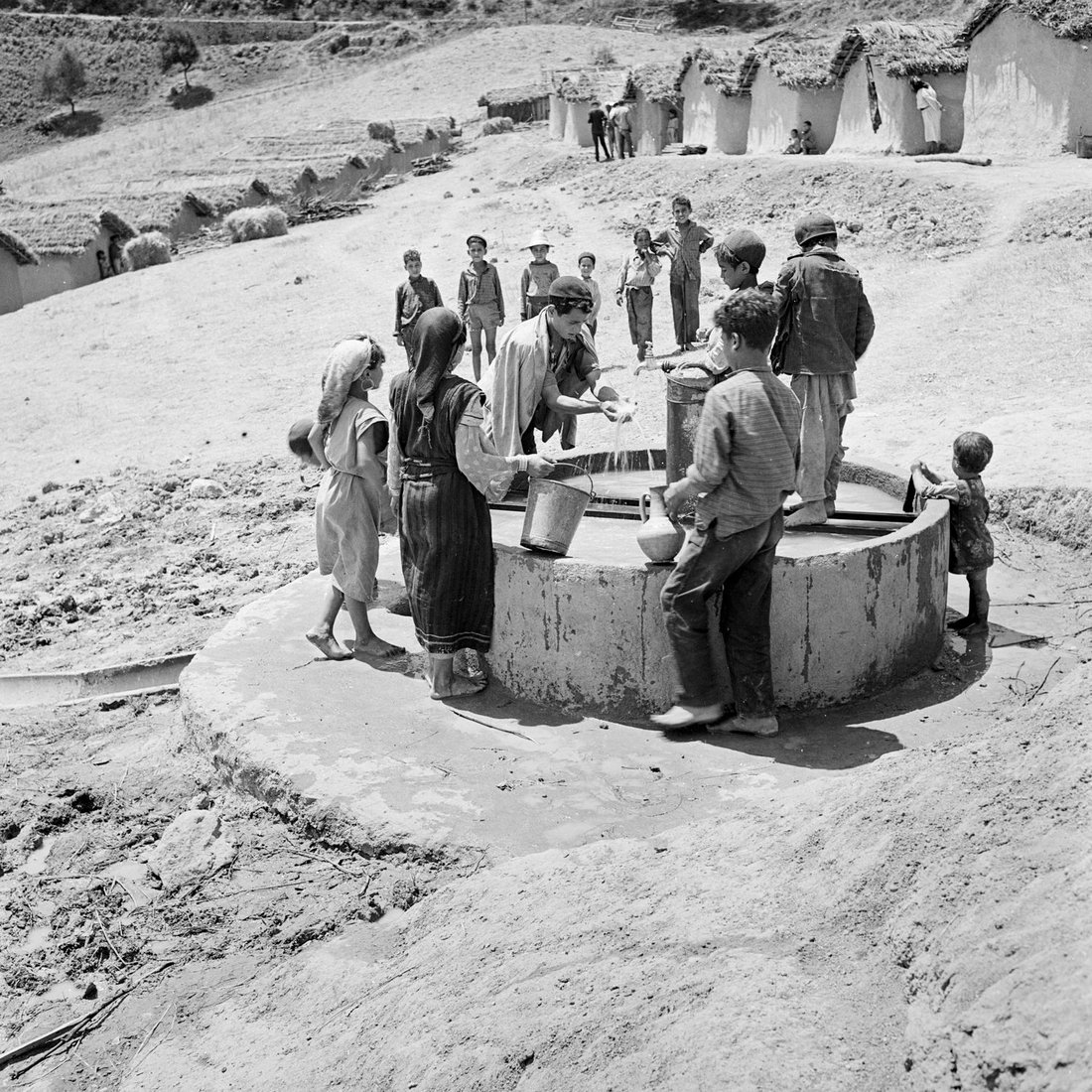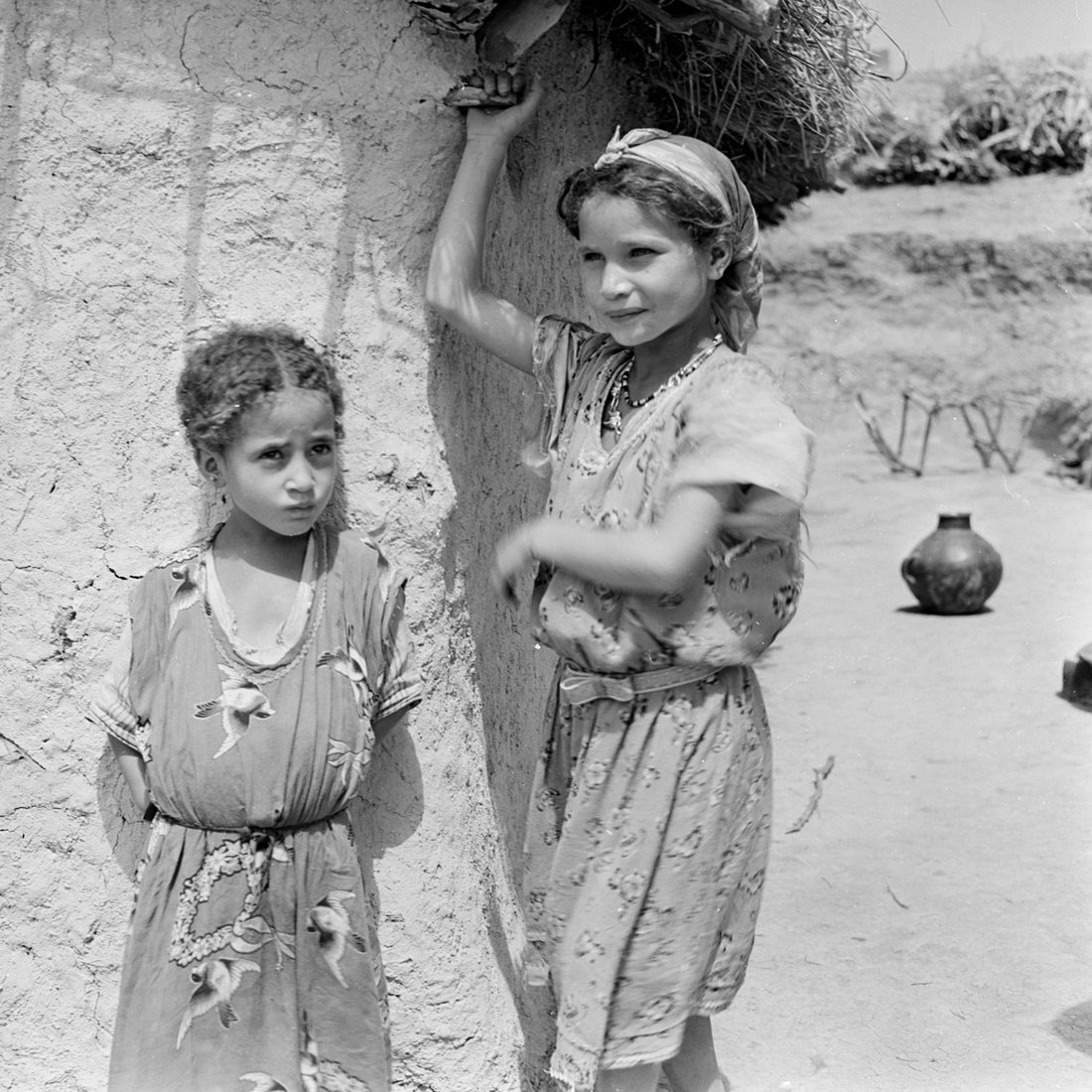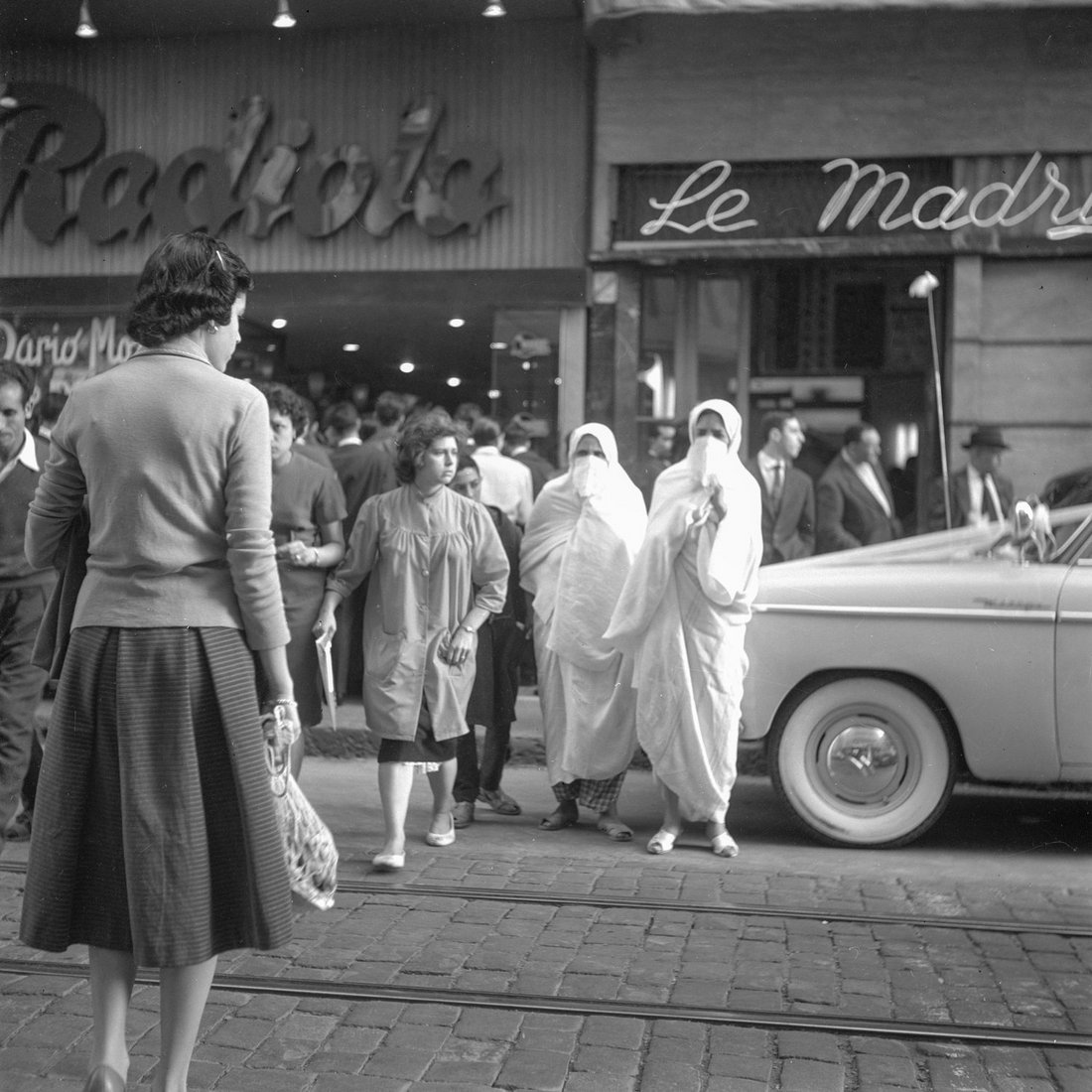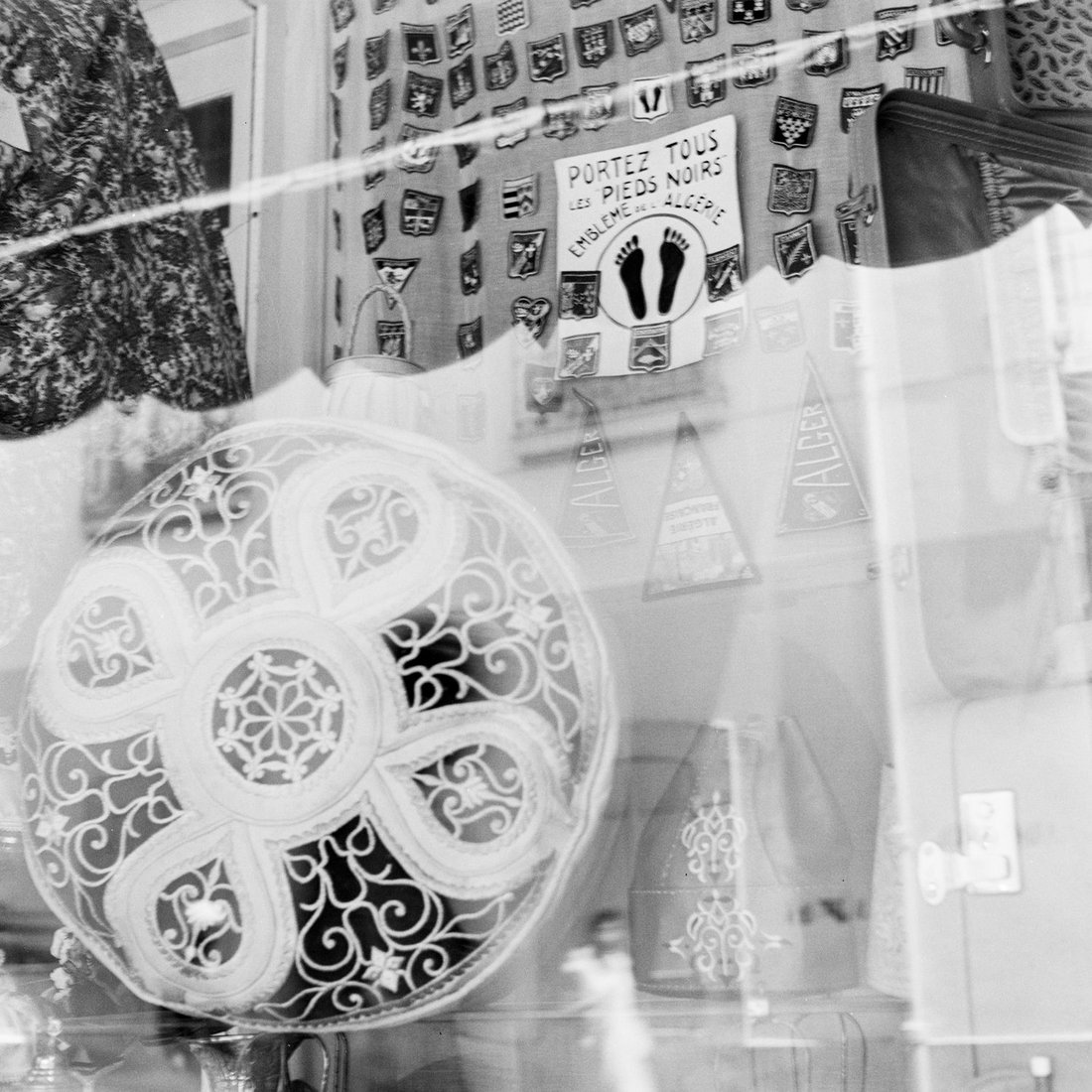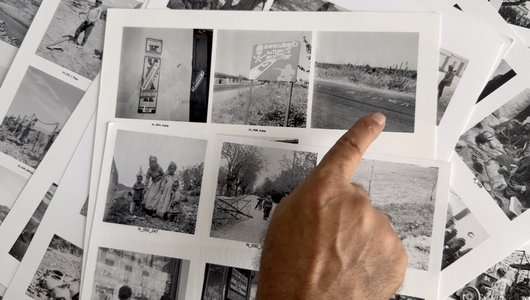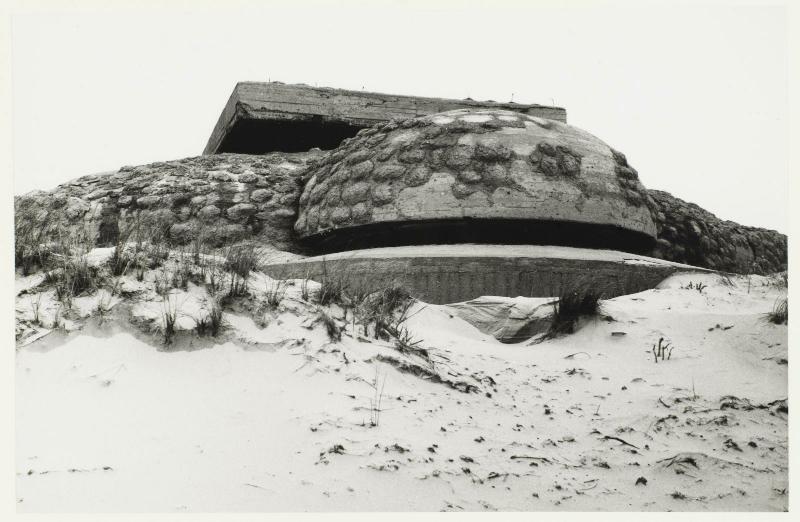Pierre Bourdieu / Paul Virilio
When photographic experience shapes thought
Echoing, artworks from Katia Kameli and Joachim Bandau
Exhibition in the Museum, level 4, room 34
14 October 2024 – 10 March 2025
This exhibition showcases the unexpected meeting of minds between Pierre Bourdieu (1930-2002) and Paul Virilio (1932-2018), two of the most important French intellectuals of the second half of the 20th century, through their respective approaches to photography. In the late 1950s, they each started to put together two quite distinct corpuses of photographs, for the purposes of their research.
As a sociologist and ethnologist, Bourdieu embraced the photographic experience as a crucial element, shaping his work in the field, while for city planner and philosopher Virilio, photography helped decipher his era and put his thoughts into images, like an archaeologist of the future.
Pierre Bourdieu is considered one of the outstanding sociologists of the 20th century, but less is known of his photographic output.
Between 1957 and 1961, serving first as a soldier in the French army and then as a professor of philosophy, he took many photographs of Algeria. This was a time of social upheaval, with the war of independence in full sway. Bourdieu's shots bore witness to the "uprooting" of indigenous peoples by the French colonial policy and reflected his interest in the various ways of life, between tradition and the shock of modernity. The photography of the author of Sociology of Algeria (1958) and Work and Workers in Algeria (1963) pointed to his interest in street scenes, dwellings and the Kabyl "habitus", as well as camps for uprooted families. These subjects contribute significantly to the humanist, politically-engaged tradition of photography in the 1930s through to the 1960s.
Bourdieu emphasised that photographic practice helped to transform his view of society, with lasting impact on his scientific work.
Images d’Algérie, 1957-1961
Gelatin Silver Prints / Digitized Negatives on Screens
Collection of the Musée National d'Art Moderne–Centre de Création Industrielle
The collection was acquired by the Photography Department of the National Museum of Modern Art in 2022. It had previously been conserved and studied at Camera Austria in Graz, Austria.
Pierre Bourdieu in a few dates
| 1930 | Born in Denguin, Pyrénées-Atlantiques |
| 1951 | After studying at the Lycée Louis-Barthou in Pau and the Lycée Louis-le-Grand in Paris, he enters the École normale supérieure. |
| 1954 | Receiving tenure as teacher in philosophy, he teaches at the Lycée de Moulins the following year. |
| 1955-1958 | Sent to Algeria for military service in the middle of the war. |
| 1958-1960 | Assistant at the Faculty of Humanities in Algiers. Conducts fieldwork, notably in Kabylia. |
| 1960 | Assistant at the Sorbonne. |
| 1961 | Senior lecturer at the University of Lille. |
| 1964 | Director of Studies at the École pratique des hautes études (6th section). |
| 1975 | Editor of the journal Actes de la Recherche en Sciences Sociales founded the same year. |
| 1981 | Joins the Collège de France, Chair of Sociology. |
| 2001 | Honorary Professor at the Collège de France. |
| 2002 | Dies in Paris. |
Chronology of the Algerian War
| 1830 | Beginning of the French conquest of Algeria |
| 1926 | Messali Hadj founds the Étoile nord-africaine, Algeria's first independence organization. |
| 8 mai 1945 | Bloody repression by French authorities of Algerian nationalist riots in Sétif, Guelma and Kherrata. |
| ler novembre 1954 | "Fied Ail Saints' Day": the National Liberation Front (FLN) launches an armed insurrection in various régions of Algeria. |
| Avril 1955 | The FLN takes part in a conference of 29 African and Asian countries of the so-called "Third World" in Bandoeng, Indonesia. The conference condemns colonization and expresses solidarity with the Algerian struggle. |
| Mars 1956 | French prime minister Guy Mollet's government votes for "special powers" to extend the authorities of the French army, which mobilizes the military troops in Algeria. |
| Janvier 1957 | Start of the Battle of Algiers: French paratroopers destroy FLN cells in the city to put an end to urban guerrilla warfare and FLN attacks. The widespread use of torture by colonial forces is disapproved of by military, political and intellectual figures. |
| Mai 1958 | In Algiers, a demonstration by Algerian Europeans turns into riots They lead to the fall of the Fourth Fiepublic and the return to power of General de Gaulle. |
| Septembre 1959 | De Gaulle declares his support for Algerian self-determination. |
| Janvier 1960 | Week of barricades in Algiers. Algerian Europeans rise up against General de Gaulle's policies. |
| Avril 1961 | Failed coup by French generals opposed to General de Gaulle's policies. The French army is divided. Some officers join the ranks of the Secret Army Organization (OAS), a clandestine structure created in February by "ultras" in French Algeria. |
| Mars 1962 | The Évian Accords ratify the ceasefire and the organization of a referendum on self-determination for Algeria. OAS violence intensifies. |
| Juillet 1962 | Proclamation of Algerian independence. Mass emigration of Europeans from Algeria. Massacres of Europeans (Oran) and Harkis. |
| Octobre 1999 | The French Parliament reclassifies the term "operations carried out in North Africa" as "the Algerian War and fighting in Tunisia and Morocco". |
Over the decade 1958 to 1968, young painter of the Antiforms series and master glass artist Paul Virilio took photographs of bunkers on the French Atlantic beaches, these military outposts abandoned by the German army during the Occupation. He framed his subjects carefully, avoiding special effects, homing in on details and sought out architectural categories revealing the various forms of war. These black and white photographs depicted "Fortress Europe", speaking of architecture and acceleration.
In 1975, during its creation phase, the Centre Pompidou presented Virilio's Bunker Archaeology for the first time in an exhibition at the Musée des Arts Décoratifs in Paris. The author published a book on the subject at the same time, bringing together the elements of his philosophy: military space and the information war, illusion and speed, a careful reading of the present and speculative thinking. This work continues even today to inspire intellectuals and artists worldwide.
My two universities were war and art. Paul Virilio
Bunker Archéologie, 1958-1968
Gelatin Silver Prints
Collection of the Musée National d'Art Moderne–Centre de Création Industrielle
In 2019, the entire Bunker Archéologie collection has been acquired by the Centre Pompidou. It contains around 700 photographic prints from different generations, contact sheets and negatives. The Centre Pompidou also keeps some 220 architectural drawings and sketches, 18 paintings from the Antiformes series and other documents from Paul Virilio's studio collection.
Paul Virilio in a few dates
| 1932 | Born in Paris, then moved to Nantes with his parents. |
| 1948 | École des métiers d'arts de Paris, stained glass section, painter of movie posters and theater sets. |
| 1949-1960 | Attends courses given by Vladimir Jankélévitch, Raymond Aron, Maurice Merleau-Ponty, as well as by physicists Louis de Broglie and René Thom. |
| 1950 | Master glassmaker and painter of Antiformes. |
| 1953 | Military service in the cartographic service of the armed forces, Freiburg, Germany. |
| 1955 | Creation of a stained-glass workshop with his wife and master glass artist Suzanne Gruault, rue Rousselet, Paris 6e. Birth of their daughter Sophie. |
| 1956 | Called up for the Algerian War, stationed in the Aurès. |
| 1960 | Runs a painting gallery, rue de l'Ancienne Comédie, Paris 6e. |
| 1963 | Founded the group "Architecture Principe", then published a first manifesto for oblique architecture. |
| 1968 | Professor at the École Spéciale d'Architecture de Paris. He taught there for 27 years, becoming director in 1974. |
| 1972 | With his friend, the sociologist Jean Duvignaud, he creates the magazine Cause Commune, which is joined by the writer Georges Perec. |
| 1972-1984 | Member of the editorial boards of Causes Communes and Traverses (CCI Beaubourg). |
| 1973 | Founds the L'Espace critique collection at Galilée publishing house, publishing authors such as Georges Perec, Jean Baudrillard, Jean Duvignaud, Michel Onfray, Marc Augé, Ignacio Ramonet, Félix Guattari… |
| 1980 | Founding member of the Centre interdisciplinaire de recherche de la paix et d'études stratégiques, with Alain Joxe, at the Maison des Sciences de l'Homme. |
| 1984 | Contributes to L'Autre Journal and joins Marguerite Duras, Gilles Deleuze, Michel Foucault, Jean-François Lyotard… |
| 1990 | Program director at the Collège international de philosophie under the direction of Jacques Derrida. |
| 1991 | Collaborates on the exhibition "La Vitesse" at the Fondation Cartier. |
| 1993 | Virilio et Chilpéric de Boiscuillé launch the "Urban Beacons" project. |
| 1996 | Participates in the "Bloc, le monolithe fracturé" exhibition at the VI Venice Mostra. |
| 1997 | Presides over the "Image et Politique" symposium at the Rencontres Internationales de la Photographie d'Arles. |
| 2002-2017 | He has curated numerous exhibitions in collaboration with the Fondation Cartier in Paris, including "Ce qui arrive", "Terre Natale. Ailleurs commence ici", "EXIT". |
| 2018 | Paul Virilio died on September 10. |
Resonances of Bunker Archeology in the work of Paul Virilio
| 1943 | As a child, Nantes was bombed by the Allies. |
| 1958-1968 | Undertakes a phenomenological study of the Atlantic Wall bunkers. |
| 1966 | Creation of the Église Sainte-Bernadette du Banlay in Nevers, with Claude Parent, a sacred building in the shape of a bunker. Publication of issue 7 of the magazine Architecture Principe, dedicated to Bunker Archéologie. |
| 1975 | "Bunker Archéologie" exhibition at the Musée des Arts décoratifs, under the aegis of CCI Beaubourg. "Bunker Archéologie" publication, Édition CCI, 1975. |
| 1984 | Publication of Guerre et Cinéma, Logistique de la perception, Cahiers du Cinéma/Édition de l'Étoile. |
| 1990-1991 | Chronicler of the Gulf War. Contributed to numerous newspapers and publications in France and abroad. |
| 1991 | For the second edition of "Bunker Archéologie", he wrote an afterword focusing on the new weapons technologies used during the Gulf War. |
| 2018 | Participates with "Bunker Archéologie" in the exhibition "Remembering Landscape" in Siegen, Germany. |
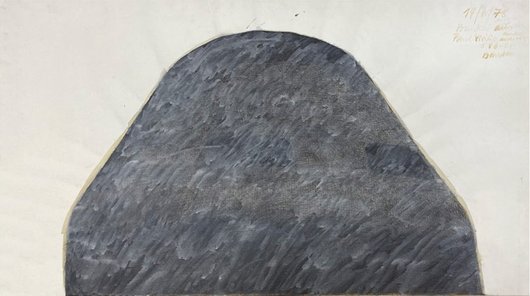
© droits réservés
Joachim Bandau
Sculptor, drawer, born in 1936 in Cologne (Allemange)
Paul Virilio Bunker Archéologie (1976)
Beispiele terroristischen Umfeldes (Exemples d’environnements terroristes) (1977)
Bunker (1978)
Drawings
Sophie Virilio
Dual-voice reading: Bunker Archéologie and notes from Paul Virilio’s unpublished travel logs
Sound installation
Extracts read by Stéphane Paoli and Sophie Virilio
